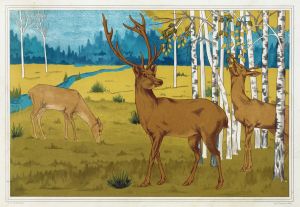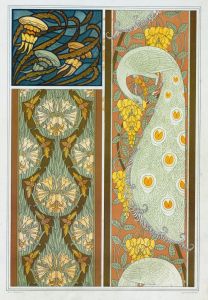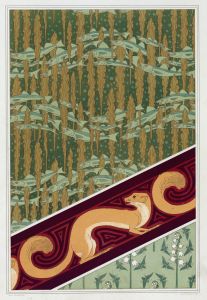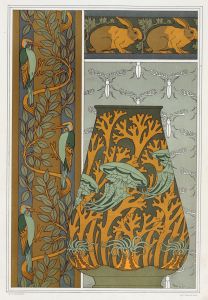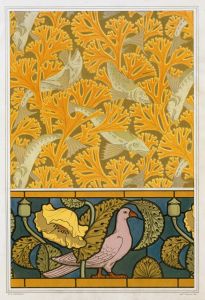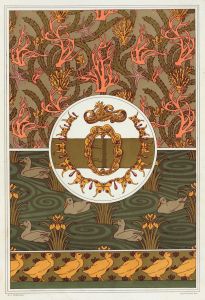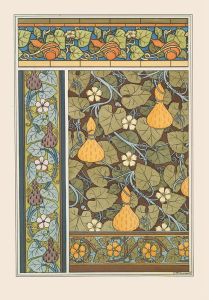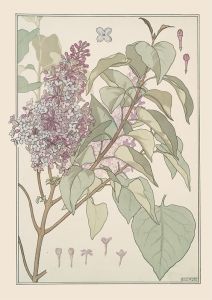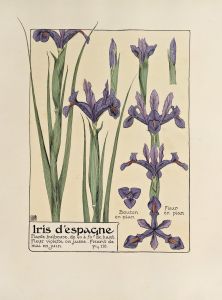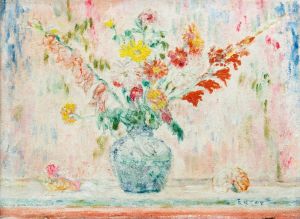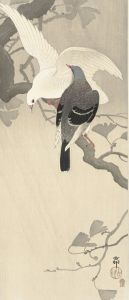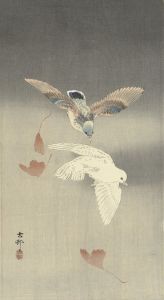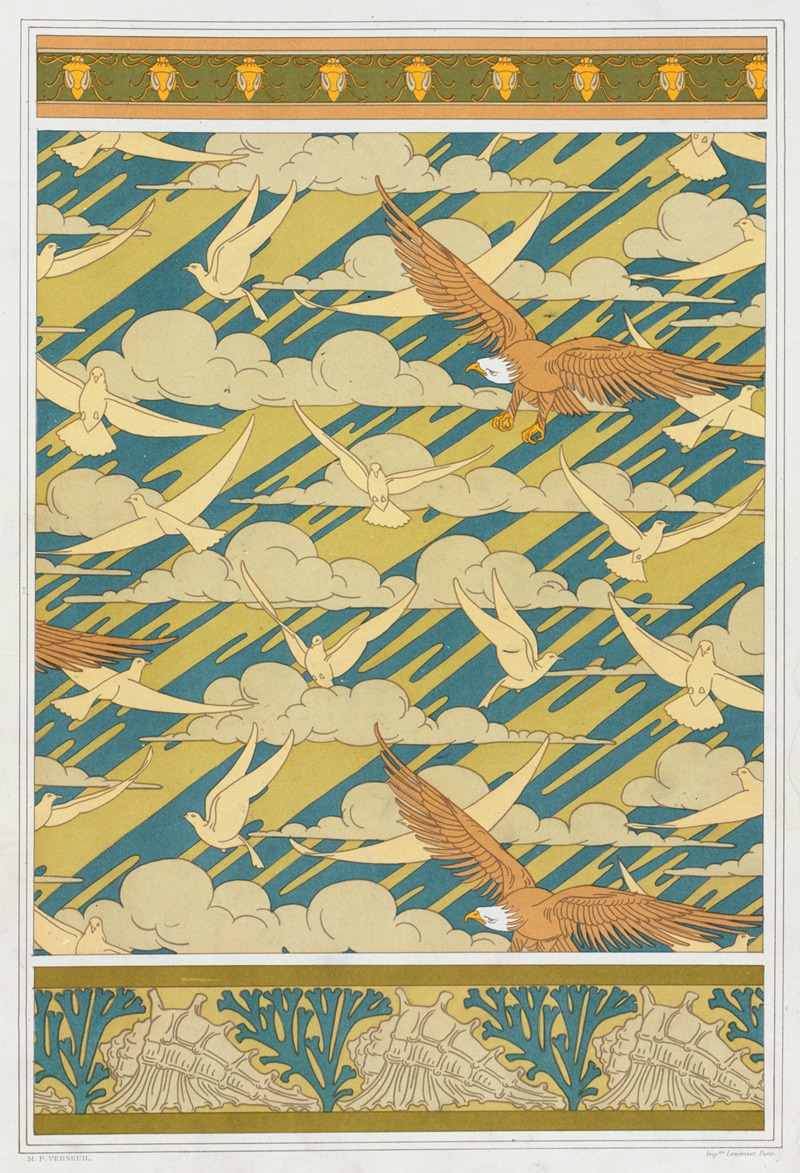
Carpocoris, bordure. Aigles et pigeons, papier peint. Coquillages et algues, bordure.
A hand-painted replica of Maurice Pillard Verneuil’s masterpiece Carpocoris, bordure. Aigles et pigeons, papier peint. Coquillages et algues, bordure., meticulously crafted by professional artists to capture the true essence of the original. Each piece is created with museum-quality canvas and rare mineral pigments, carefully painted by experienced artists with delicate brushstrokes and rich, layered colors to perfectly recreate the texture of the original artwork. Unlike machine-printed reproductions, this hand-painted version brings the painting to life, infused with the artist’s emotions and skill in every stroke. Whether for personal collection or home decoration, it instantly elevates the artistic atmosphere of any space.
Maurice Pillard Verneuil was a prominent French artist and designer known for his contributions to the Art Nouveau movement, particularly in the realm of decorative arts. Born in 1869, Verneuil's work was characterized by its intricate patterns and vibrant use of color, often inspired by natural forms and motifs. His designs were widely used in wallpapers, textiles, and other decorative applications, reflecting the Art Nouveau style's emphasis on organic forms and elaborate ornamentation.
The work titled "Carpocoris, bordure. Aigles et pigeons, papier peint. Coquillages et algues, bordure." is a testament to Verneuil's skill in creating detailed and harmonious compositions. This piece, like many of his works, likely features a combination of natural elements, possibly including insects, birds, and marine life, arranged in a decorative border format. The title suggests a focus on specific elements: "Carpocoris" refers to a genus of shield bugs, "Aigles et pigeons" translates to "eagles and pigeons," and "Coquillages et algues" means "shells and algae." These elements indicate a diverse range of natural subjects that Verneuil might have used to create a rich tapestry of life, typical of his style.
Verneuil's work was heavily influenced by the natural world, and he often incorporated a wide array of flora and fauna into his designs. This approach was not only a hallmark of his personal style but also a reflection of the broader Art Nouveau movement, which sought to break away from the rigid structures of previous artistic styles and embrace the fluidity and dynamism of nature. His designs were celebrated for their ability to transform everyday objects into works of art, making them accessible to a wider audience.
In addition to his work as a designer, Verneuil was also an educator and author. He published several books on design and ornamentation, sharing his knowledge and passion for the decorative arts with others. His publications often included detailed illustrations and patterns, serving as both inspiration and practical guides for other artists and designers.
Verneuil's influence extended beyond France, as his work was part of the larger international Art Nouveau movement that swept across Europe and the United States in the late 19th and early 20th centuries. His designs were exhibited in various international expositions, where they were met with acclaim and contributed to the spread of the Art Nouveau aesthetic.
Despite the passage of time, Maurice Pillard Verneuil's work continues to be appreciated for its beauty and craftsmanship. His ability to capture the essence of the natural world and translate it into decorative art remains a source of inspiration for contemporary artists and designers. The piece "Carpocoris, bordure. Aigles et pigeons, papier peint. Coquillages et algues, bordure." exemplifies his talent for creating intricate and visually captivating designs that celebrate the diversity and beauty of nature.





